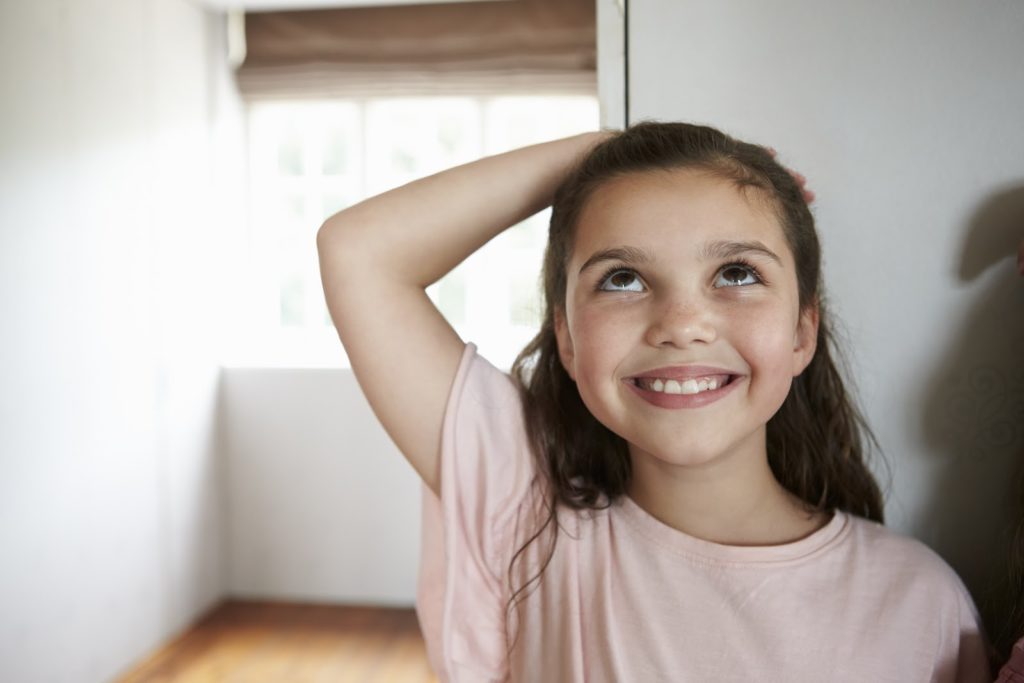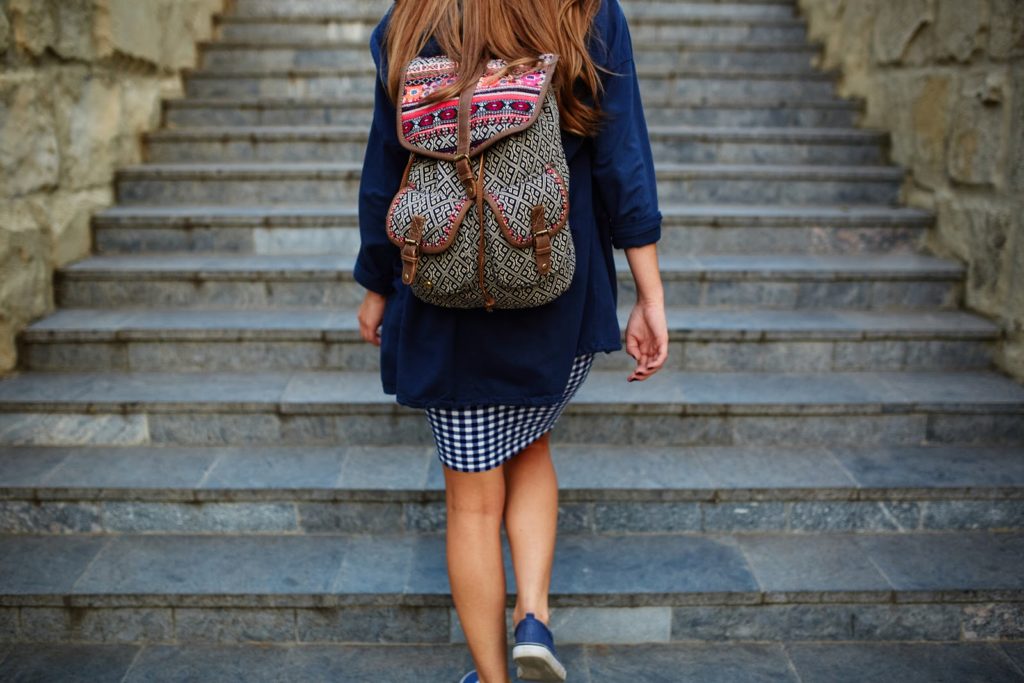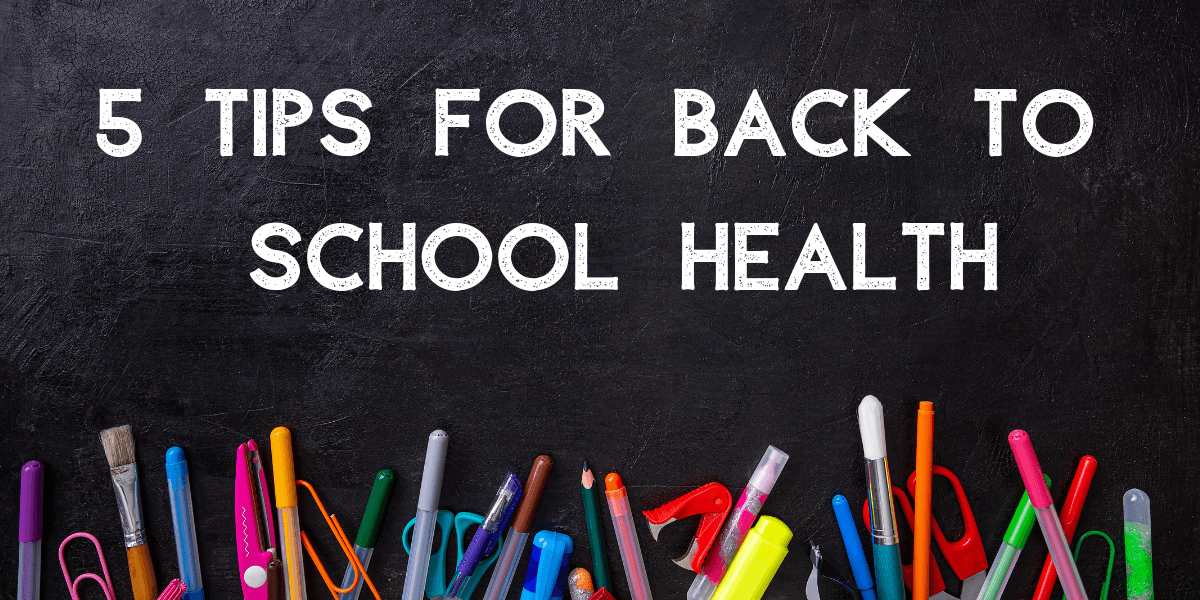Do you hear that? If you listen closely you can start to hear the whining of kids (and parents) about school season quickly approaching. August brings with it the new school year, and millions of children will soon be back in the classroom for upwards of 40 hours a week.
That’s 40 hours of sitting in uncomfortable desks and lugging around textbook-filled backpacks. While kids are improving their knowledge base and mental skills throughout their schooling years, many are inflicting harm to their spines and back muscles. Maybe this sounds over the top, but are kids really hurting themselves just by sitting in a chair listening to their teacher?
Well, yes.
Studies have concluded that many kids practice poor posture in the school setting and this can result in back pain and other spinal conditions such as scoliosis.
So in an attempt to protect your children from harming their backs this school year, let’s look at five easy tips to save them from further spine complications.
1. Posture, Posture, Posture
Posture is something we need to constantly be conscious of, as it is the biggest contributing factor to our spinal alignment. Whether you are standing or sitting, maintaining proper posture will help prevent a grocery list of issues including:
- Forward head posture
- Back pain
- Digestive impairment
- Poor cardiovascular circulation
- Fatigue
- Depressed mood
- TMJ
- Headaches
So what does “proper posture” look like?
Proper posture translates to the cervical, thoracic, and lumbar sections of the spine being aligned and balanced.
When sitting, keep your feet flat on the floor, and do not cross your legs. The knees should be level or below your hip line and your back should be flush against the chair’s backrest. Be sure to keep your shoulders relaxed, and the forearms should be parallel to the ground.
When standing, your weight should be evenly distributed between the balls of your feet and shoulder-width apart from each other. Your arms should hang naturally down at the sides, as your stomach is tucked in. Keep the shoulders pulled back, as the earlobes should align with the tops of the shoulders.

Girl Measuring Height Standing Against Wall At Home
(Good posture is the most important aspect of protecting a child’s spine health.)
2. Cinderella Shoes
It is important for kids to be wearing the right shoes to protect their back health. As kids are walking from classroom to classroom, wearing proper shoe attire makes a dramatic difference in spine support.
It is suggested that shoes with plenty of arch support, thicker soles, and ankle support provide a positive foundation for spine health. So that’s a no go on your child’s favorite Nike slide sandals.
3. Run, Forrest! Run!
Physical activity has proven to be beneficial for bone structure. By engaging in physical activities like gym class, muscles and bones are worked in a positive manner that helps improve spine health. In one study, children who completed 10 minutes of jumping jacks — three times a week during the school year — showed a 3 percent increase in bone mineral content versus children who didn’t participate in physical activity.
Another protective measure of back health is participating in different sports. Children who specialize in one specific sport are constantly repeating the same motions and actions, leading to an increase in injury and back pain. By participating in various sports, different movements are completed and provide the body with rest from repeated exercises.
4. Children Aren’t Ants
Ants are estimated to be able to carry up to 50 times their body weight. Humans are just not capable of these physical feats. Therefore, the backpacks that kids carry around need to only weigh a certain amount, in addition to being properly worn.
A child’s backpack should not exceed 10 percent of the child’s overall weight. (A 100-pound middle schooler should not be carrying a backpack that weighs over 10 pounds.) Just as important is the way in which kids are carrying their backpacks. Both straps should be around the shoulders and the bottom of the backpack should be about two inches above the waist. These practices will help limit abnormal spine curvature and muscle strain.

Student girl with a backpack climbing stairs. Rear view
(A child’s backpack should not exceed more than 10 percent of their own body weight.)
5. Eat Your Brussel Sprouts
It’s no surprise that diet is an important aspect of overall health, but maybe you’re thinking how does it relate to back health specifically? The musculoskeletal system is designed to carry a certain amount of strain on its frame. When excess weight is being carried every day, damage can start to occur on muscles, ligaments, and bones.
It is encouraged for children to follow a monitored diet of vegetables, fruits, and lean proteins to help maintain a healthy weight range. Avoiding highly processed and sugary food can also benefit weight management.
Reinhardt Chiropractic Has Got Your Back
Do you have questions or concerns about your child’s back health? We are here to help! Contact us to learn more tips on protecting your child’s spine, and ensuring this school year is a healthy one.
Recent Post
Managing Stress and Tension: How Chiropractic Care Can Help
July 1, 2024
In our fast-paced world, stress and tension have become ever-present. Whether it’s the demands of work, family responsibilities, or the challenges of everyday life, many of us are constantly battling stress. At Reinhardt Chiropractic, we believe in a holistic approach to health that addresses not only physical pain but also the underlying stress that can
Read More…
Understanding the Benefits of Chiropractic Care for Athletes: Enhancing Performance and Preventing Injuries
June 1, 2024
In the world of sports, athletes are always seeking ways to improve their performance and prevent injuries. One often overlooked yet highly effective method is chiropractic care. At Reinhardt Chiropractic, we understand the unique demands placed on athletes and how chiropractic care can be a game-changer in their training and recovery regimes. Enhancing Performance Improved
Read More…

